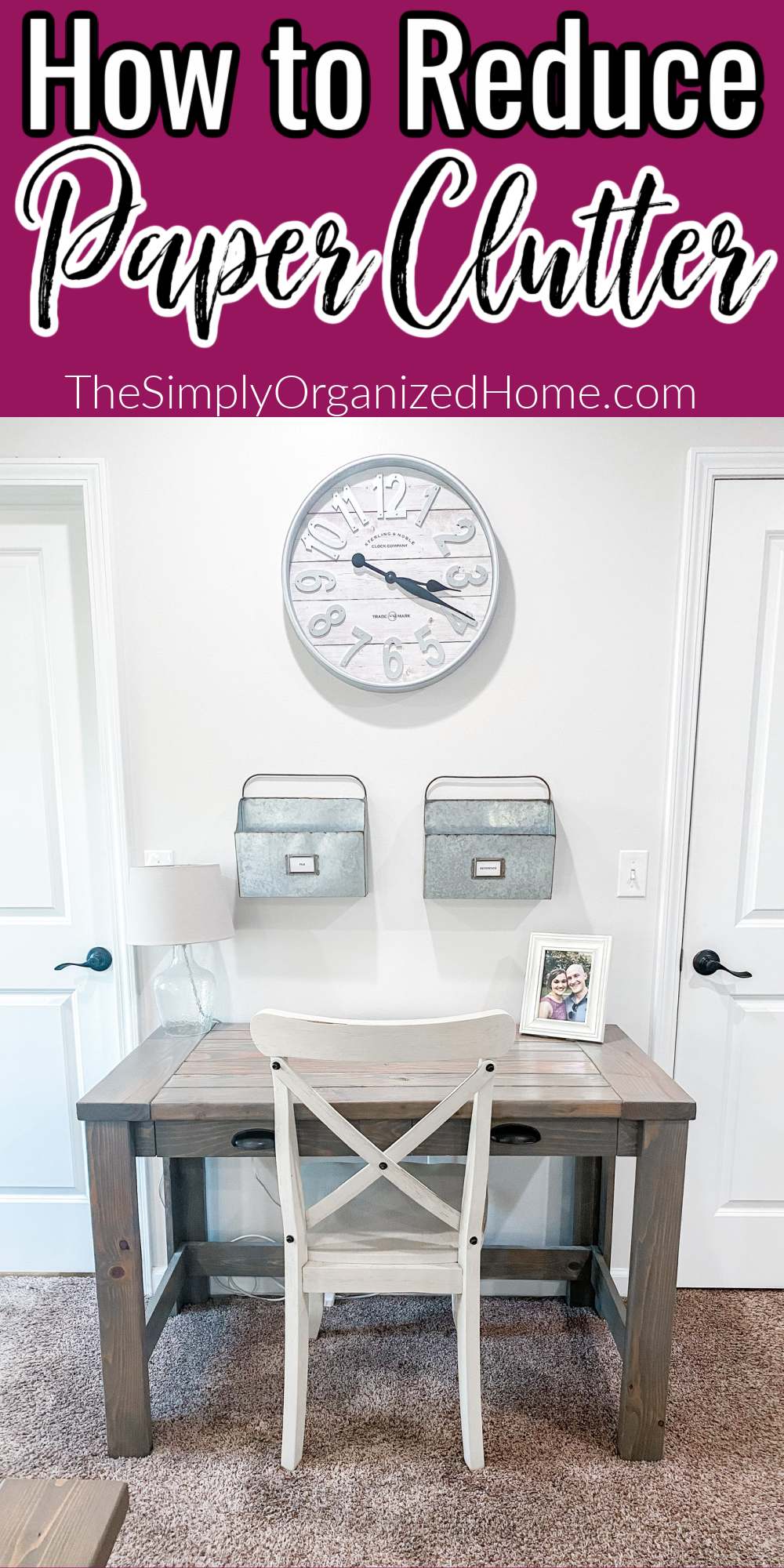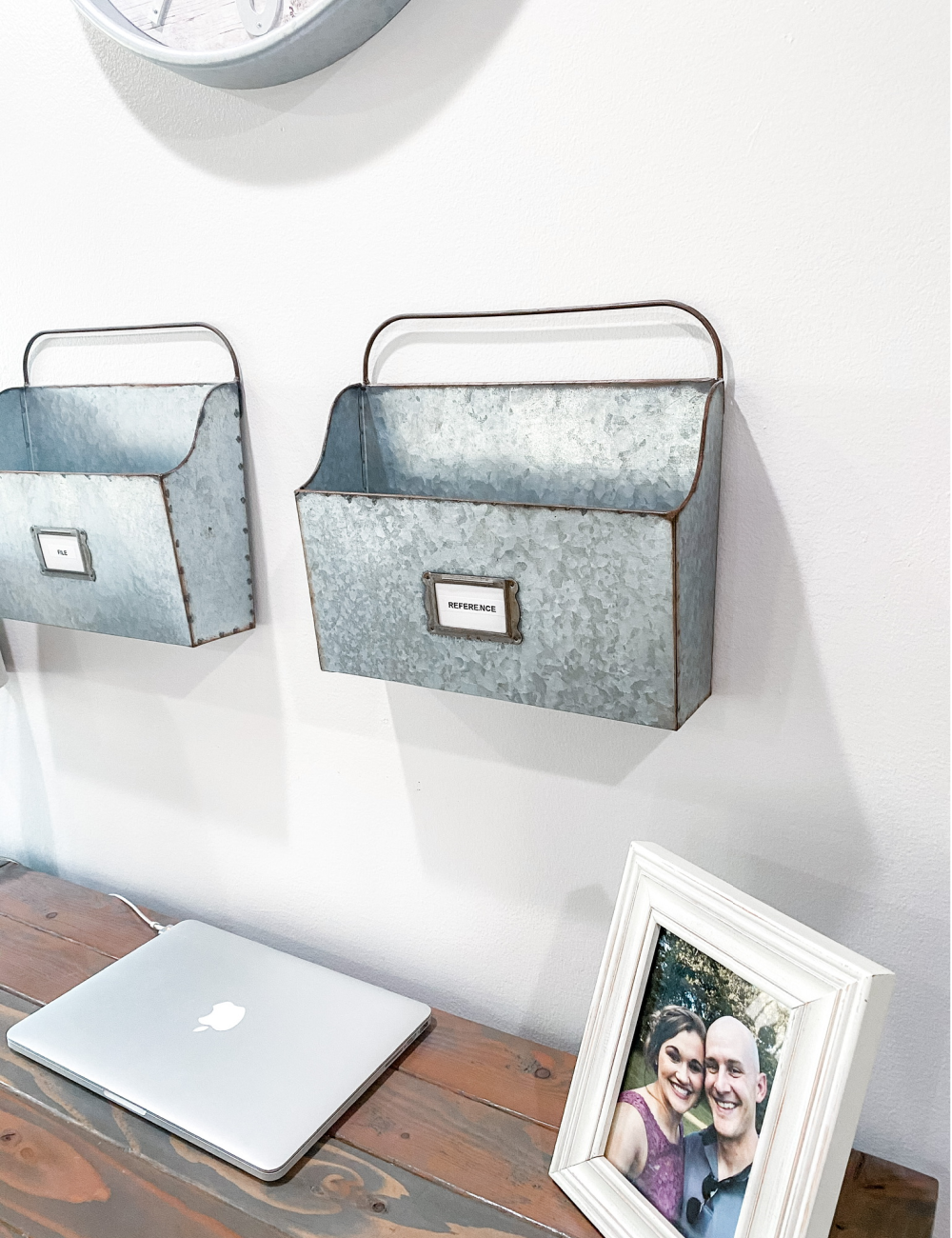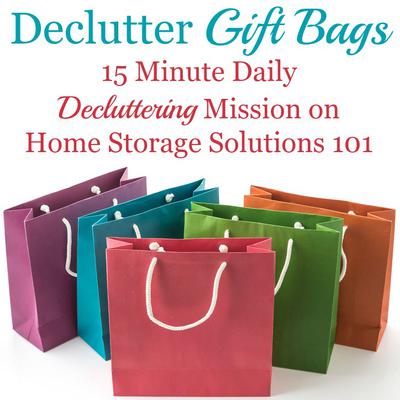How to Reduce Paper Clutter
Learn how to reduce paper clutter in your home and simplify your paper system with this three step process!

Before simplifying our home, we were the family with the large stack of papers that would rival mount Everest on the corner of our kitchen countertops. Yep, I had one of those too! And the sheer anxiety that stack of paper caused me was overwhelming. I avoided sorting through it for weeks because I was always afraid the task would take forever. And by the time I actually got around to sorting through it, it would in fact take hours. I would then vow to never let that happen again, only to be in the same exact situation a few months later.
But over the years, I’ve realized that we just don’t need to keep so much paper. And instead of letting it pile up, we’ve tried to reduce the amount of paper coming into our home. And while I think we can all definitely reduce the amount of paper we have coming in, paper is really inevitable. We will all have paper to deal with on some level. So next week I’ll be sharing our Family’s Minimal Paper Organization System so you can see how we manage the paper we do keep.
But first, let’s start by learning how to reduce paper clutter quickly so we can stop stressing over those monster paper piles around our homes!
HOW TO REDUCE PAPER CLUTTER QUICKLY
We can quickly sort ALL paper into 3 categories. Keep in long-term storage, keep in short-term storage and recycle. Classifying all paperwork into these three categories will help you quickly sort out a huge portion of paperwork you can simply throw into the recycle bin and forget about.
RECYCLE
Things that will likely fit into the recycle category include magazines, ads, coupons (often expired!), artwork your child made that doesn’t make the “keepsake” list, old notes or to-do lists, printed recipes you haven’t tried, manuals, expired warranties, and outdated receipts or receipts for items you never intend to return.
A few thoughts on some items that can hold us up:
Magazines & catalogs – Chances are, if you have it for a month or longer and haven’t looked through it, you aren’t going to any time soon. And most of the ideas can be found online now. So when in doubt, throw it out.
Ads & coupons – again, almost all ads can be found with a quick Google search online. And many coupons are the same. If it’s not a coupon you intend to use, then throw it out. Also, don’t keep coupons for things unless you intended to purchase that item or from that store without it. Coupons were created to get us to spend more (and in turn, accumulate) more than we planned. Don’t be tempted to shop for something if it wasn’t already on your list.
Kids Artwork – obviously, some items you will want to keep and should be treasured. However, if you have a budding artist in your family, then the influx of “artwork” can seem overwhelming. We all need to create our own boundaries around the amount of “keepsakes” we intend to keep for our children. Finding a storage tub can be a great start. I’m a strong advocate for only keeping the “best of the best.” This means I only end up keeping 4-6 pieces of artwork a year from my children. These are pieces they have obviously put a lot of time and effort into creating. At the end of each school year, I sort through what I’ve kept. If it happens to be more than I intended, I will weed through a few pieces and recycle them only keeping the “best of the best.”
Manuals and Warranties – Almost ALL manuals can be found online with a quick Google search these days. And many of the “warranties” we have kept over the years are long expired. Recycle as much of these as possible. Chances are, if you need a manual down the road, you won’t remember where you filed it away and will just utilize Google anyways.
Receipts – Most receipts can be recycled immediately. If you have no plans of returning an item, then it’s not worth the headache of keeping (and filing away) the receipt. For larger purchases, I recommend storing ALL receipt in one file labeled with the year on it. Since most receipts are only applicable for 3-6 months, at the end of the year, you can quickly recycle those receipts with confidence knowing that you won’t need them anymore. I’ve found that most returns don’t even require a receipt anymore. Especially if you used a card to make your purchase since the computer systems can easily look up your purchase that way.
Similar: Our Entire Paper Organization System
SHORT-TERM STORAGE
Your short-term storage items will be papers that you need to keep for ~30-60 days or less. These are papers you might need to reference in the near future for some reason. Things like your child’s school lunch menu or a coupon you intend you use for a local store. You likely won’t have a ton in this pile, but I think it’s important to have a place to put these items or they will inevitably become clutter on a surface in your home.

We keep anything that’s short-term storage in a wall pocket that’s labeled reference above our desk. I think you have a lot of options with this. You could utilize a magnetic pocket on the side of your fridge, a file folder in your desk, or a paper tray next to your printer. But the point is to ONLY put items in this place that you intend to reference. And then when you are finished, it should be recycled. This can be easier said than done. I will usually take 5 minutes about once a month to sort through our reference file. But it only takes a few minutes because we are very diligent about only keeping items here that we will actually reference.
Another option for many items is to simply snap a picture on your phone. If it’s a form with an important date on it, just add it to your calendar or planner rather than keeping the entire form. These two simple steps will greatly reduce the amount of paperwork you need to keep in short-term storage.
LONG-TERM STORAGE
I’m a big fan of keeping a very simple filing system. I think many of us keep far more than we actually need to keep. Many things are so easily accessible on the internet making them easily replaceable if we were to ever need a printed copy again in the future. But the reality is that over 95% of what we put away into long-term paper storage will never be touched again. So we have to ask ourselves how easily replaceable is it.
My rule of thumb is if I can access it in 5 minutes or less by logging into an online account, then I don’t keep the physical copy. Chances are I’m not going to need to access it ever again. But if on the off chance I do, I can get to it quickly.
So I no longer store things like explanation of benefits from my insurance company, most utility bill statements, or even most investment or credit card statements. These can all be found online with a few clicks of a button. We now have apps that can access all that information for us! There really is no reason to have all that extra paper cluttering up your filing cabinet. These items just make it harder to get to the items you do need to keep.
A few items that I am diligent to keep include:
- Current Car, Home & Life Insurance Policy Information
- Pay Stubs for 1 year (we aren’t able to access these online)
- Paid medical bill statements for 1 year (I write the date paid and check number or confirmation number if paid over the phone on the bill.)
- Car & Home Repair & Maintenance Receipts/Statements
- Yearly Credit Reports (I pull these free once a year to make sure our credit reports don’t contain any inaccurate information.)
- Annual Savings, Retirement, Mortgage, and Property Tax Statements
- 7 years of Tax Information
Please remember, I’m not an account, lawyer, or finance professional. This is just how we maintain our paperwork. This is not advice given by a professional. Just a mom who likes less clutter and organized spaces!
Similar: Create an Organized Filing System
SAFE
We do keep items like social security cards, birth and marriage certificates, and college diplomas and transcripts in a fire-proof safe. All of these items fit nicely into one file and can easily be tucked away for safe keeping. I think it’s really important to make sure any important document is not only managed and maintained well, but also stored properly in case of emergency.
I hope you’ve found some encouragement and helpful tips to begin decluttering the paper in your home. It doesn’t have to be as overwhelming as we often make it out to be. If you’re feeling stuck, I recommend working in short spurts. 10-20 minutes a day can really make a huge difference over the course of a week or two. You’ll be shocked by how much you get done if you just begin!
Next week we will talk about how we organize all of the paper we do keep in a very simple and minimal way! It doesn’t take big elaborate systems or expensive organization tools! It’s quick, easy, and practical.

The post How to Reduce Paper Clutter appeared first on The Simply Organized Home.
Related Storage & Organizing Items
Find the best deals on Storage and Organization solutions at buyshop24.com.
Get Discounts and special offers on Small Storage and Organizers
Make cleaning up Fun with our Fun Toy Storage
Get organized with Storage boxes and baskets for every room





Leave a comment